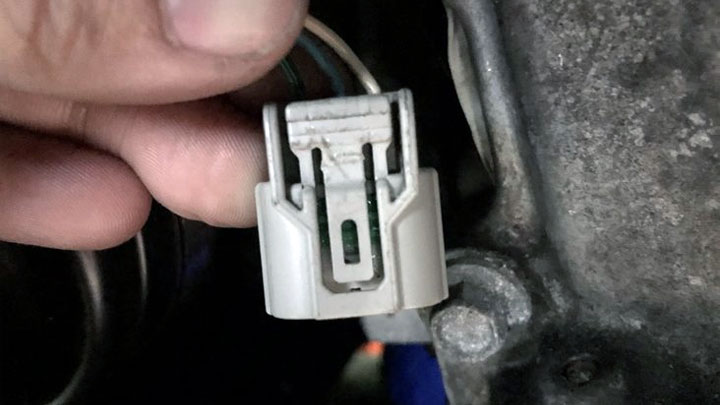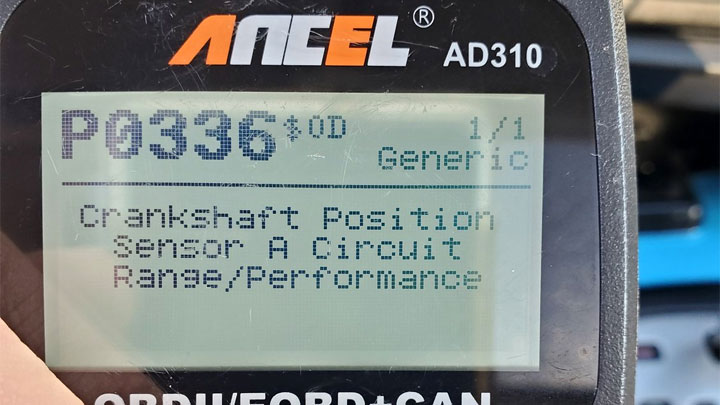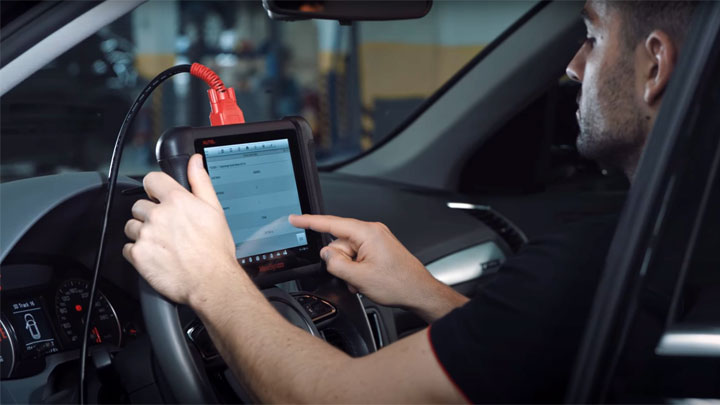P0336 Code (Symptoms, Causes, and How to Fix)
That dreaded Check Engine light spells trouble to most drivers. Costly repairs! Lost time! But while anxiety-inducing, it simply indicates something is below peak efficiency, and not necessarily a severe issue.
P0336 is a relatively common fault code which is representative of the relative inability of a vehicle to accurately depict engine timing.
Whether you drive a Chevy, Honda, or other vehicle (even a Kubota tractor), read on to learn what causes a P0336 code, its severity, and how to fix it.

What Does Code P0336 Mean?
Diagnostic fault code P0336 is indicative of a loss in crankshaft position sensor feedback, which has persisted beyond a permissible frame of time, predetermined by a vehicle’s manufacturer.
Simply put, DTC P0336 means that your vehicle’s ECM is not receiving timing related feedback from your engine’s crankshaft position sensor, as expected.
However, for the sake of understanding, one should first familiarize themselves with the basic operation of a vehicle’s crankshaft position sensor. This sensor provides feedback to an engine’s management software, related to engine speed and timing. This data is used when calculating spark and injection timing.
Most crankshaft position sensors are magnetic in nature and correspond to a crankshaft-mounted reluctor wheel. This wheel features numerous teeth, pre-arranged at a specified interval. As the crankshaft turns, the magnetic sensor creates pulses, which are interpreted by a vehicle’s ECM/PCM as a “speed” reading.
In the case of DTC P0336, a vehicle’s ECM/PCM has determined that the crankshaft position sensor is not providing the feedback that it anticipates, or is failing to provide feedback as a whole.
Therefore, this leaves an engine’s management software without crucial figures required to calculate any number of timing related functions.
Related: Code P0335
Symptoms of Fault Code P0336

Diagnostic fault code P0336 is often accompanied by a number of additional symptoms. These symptoms range in severity from relatively minor, to quite troubling, and can prove detrimental to a vehicle’s overall drivability.
The following are the most common symptoms associated with DTC P0336.
- Check engine light
- Difficulty starting
- Intermittent stalling
- Random or intermittent engine misfire
- Erratic idle
- Reduced fuel economy
Causes of Code P0336

Diagnostic fault code P0336 can be caused by a number of underlying conditions. Some of these conditions prove easier to manage or repair than others. Understanding each of the potential root causes of DTC P0336, one is better able to expedite the repair of their vehicle.
- Faulty crankshaft position sensor
- Damaged or misaligned reluctor ring
- Frayed, damage, shorted, or open crank position sensor wiring
- Faulty circuit wiring connection
- Compromised ECM/PCM
Is Code P0336 Serious?

Diagnostic trouble code P0336 is generally considered to be quite severe in nature. This is due to the fact that this particular fault code is often accompanied by one or more severe drivability-related symptoms.
In the most severe of cases, DTC P0336 can result in engine stalling, creating a potentially hazardous situation, especially if one is driving in heavy traffic when their vehicle stalls.
Additionally, a failure within the crankshaft position circuit has the tendency to produce a “no start” condition. This, in turn, can leave you stranded without recourse, other than to call for a costly tow. This can also prove extremely inconvenient, especially when trying to commute on a timeline.
In any event, the root cause of DTC P0336 should be diagnosed and repaired at the first available opportunity. Vehicle operation should also cease until proper repairs can be made.
If you do not feel comfortable tackling such repairs yourself, make an appointment with a trusted automotive service center as soon as possible.
How to Fix Code P0336

The following steps can be used to assist you in diagnosing and repairing the root cause of diagnostic trouble code P0336. As always, be sure to consult factory-specific service literature for your particular vehicle, before attempting any such repairs.
#1 – Check For Additional DTCs
Before beginning the diagnostic process, check for the presence of additional fault codes, with the use of a quality scan tool. All other fault codes should be thoroughly diagnosed before continuing.
#2 – Inspect Crankshaft Position Sensor Wiring/ Connector
Begin by performing a thorough visual inspection of your vehicle’s crankshaft position sensor wiring. Carefully check for signs of damage or fraying, as well as possible pinched spots.
Additionally, it is imperative to make sure that this particular harness is not routed too close to any of an engine’s spark plug wires, or else interference might take place. Also, check to ensure that all circuit connectors are tight and free of damage/ corrosion.
#3 – Check Circuit Resistance
Crankshaft position sensors naturally feature some level of resistance. The exact level of resistance featured by a particular sensor differs from one model of vehicle to the next.
Using a digital multimeter, check to ensure that your vehicle’s crankshaft position sensor’s resistance matches that specified by the vehicle’s manufacturer.
#4 – Inspect Reluctor Wheel
Next, remove your vehicle’s crankshaft position sensor, and check for signs of damage to the crankshaft’s reluctor ring, where applicable.
Carefully check for the presence of any damage or compromised teeth, while barring the engine over by hand. The reluctor wheel should also be tightly mounted upon the crankshaft, and free of any “play”.
#5 – Check RPM Readings
With the use of a premium scan tool, check for the presence of a steady crankshaft position sensor reading. Have an assistant drive, while you observe any and all data being reflected.
Any increases or decreases in vehicle speed should be met with steady fluctuations in the crankshaft position sensor signal, in parallel. Irregularities within this signal are indicative of sensor/circuit related issues.
On the contrary, a lack of observable issues would necessitate further testing of a vehicle’s ECM/PCM.
- Car Temperature Gauge Stopped Working? (Here’s Why) - Apr 15, 2024
- Ignition Coil vs Coil Pack (What’s the Difference?) - Apr 8, 2024
- Windshield Wipers Won’t Turn Off? (Causes and What to Do) - Apr 5, 2024
